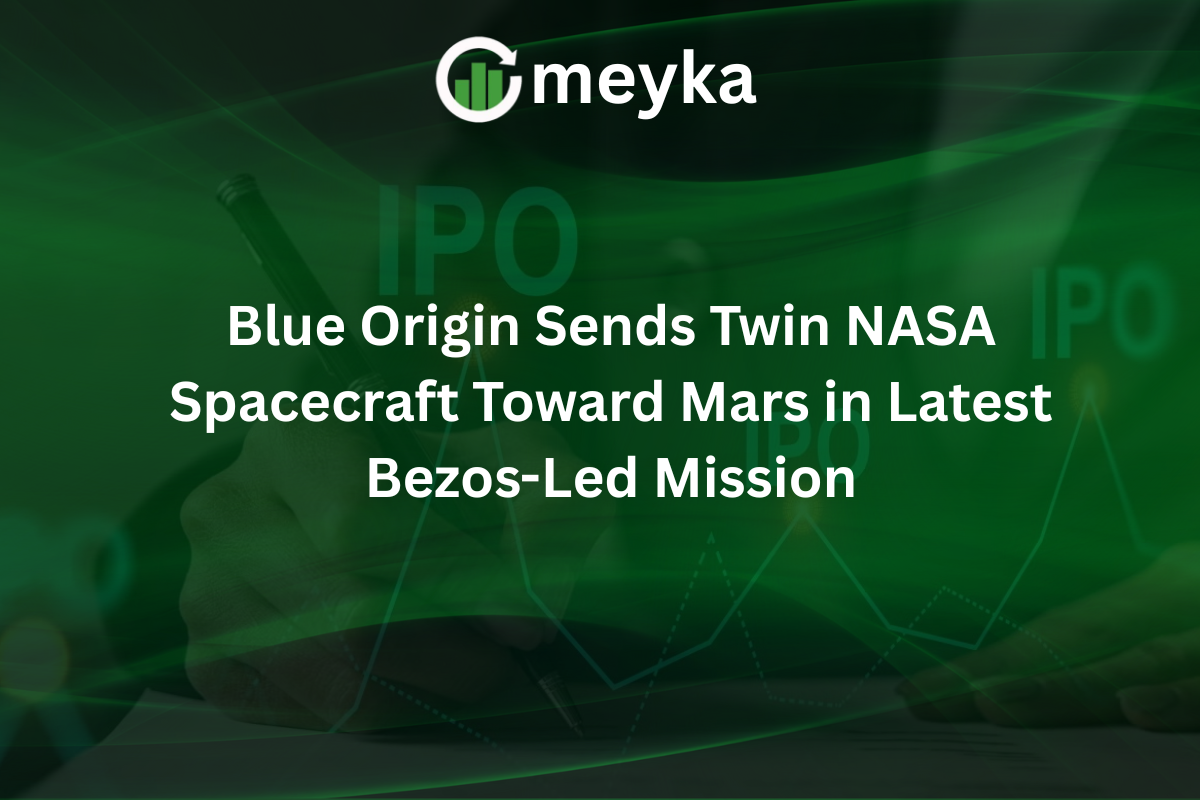Blue Origin Sends Twin NASA Spacecraft Toward Mars in Latest Bezos-Led Mission
Today’s launch marks a major leap forward in space exploration: two NASA spacecraft have begun their long voyage to Mars aboard Blue Origin’s revolutionary heavy-lift rocket. This mission not only advances our understanding of the Red Planet but also underscores the growing role of commercial space companies in NASA’s future. Read on for the full story of how this mission came together, why it matters, what’s next, and how you can follow along.
What is the NASA spacecraft mission and who is involved?
What exactly is being launched?
The mission carries two identical NASA spacecraft — part of the EscaPADE (Escape and Plasma Acceleration and Dynamics Explorers) project. The twin probes are named “Blue” and “Gold”. They will study how the solar wind interacts with Mars’s magnetic field and how that affects atmospheric escape.
Who built the spacecraft and how much did it cost?
The EscaPADE spacecraft were developed under NASA oversight by the University of California, Berkeley with instruments supplied by them; the mission arrived at a relatively low cost for NASA — under US$ 80 million.
They were launched by Blue Origin using its heavy-lift rocket named New Glenn. This is a major step up from the company’s previous sub-orbital New Shepard flights.
Why does this matter for NASA and Blue Origin?
For NASA this mission is significant because it expands scientific exploration of Mars’s upper atmosphere and magnetic fields, helping us learn how Mars went from wet to arid. For Blue Origin this marks a transition: the rocket New Glenn is now carrying major science payloads for NASA rather than only commercial or test flights.
When and where did the launch happen?
Launch details
- Date: November 13, 2025.
- Location: Cape Canaveral Space Force Station, Florida — Launch Complex 36.
- Rocket: New Glenn, standing 321 ft (98 m) tall, with a powerful first stage and reusable booster.
What hurdles were overcome?
The launch was delayed four days due to poor weather and a solar storm, which created auroras visible as far south as Florida.
These delays highlight how space missions must account for conditions both in space and on Earth.
What are the mission goals of the NASA spacecraft?
Scientific objectives
- The twin NASA spacecraft will travel to Mars and will study how the solar wind strips away Mars’s atmosphere.
- They will also map the planet’s magnetic environment and contribute to understanding radiation conditions for future human missions.
- The mission introduces a stereo view because two probes will be orbiting Mars together, giving paired observations.
Timeline of operations
- The craft will spend about a year near Earth as they prepare for trajectory to Mars.
- They are expected to arrive at Mars in 2027 and then enter orbit for an approximately 11-month study.
What makes this launch technically special for Blue Origin?
Reusable booster success
For Blue Origin, the successful landing of New Glenn’s first stage booster on a barge offshore marks a milestone. The company landed its booster at sea, on a platform named “Jacklyn”. This shows Blue Origin is pushing forward reusable hardware, a key cost-saving approach in modern spaceflight.
Heavy-lift capability
New Glenn is designed to carry large payloads. It offers more thrust than older rockets from Blue Origin and competes with vehicles like SpaceX’s Falcon Heavy.
What does this mean for the future of Mars exploration and commercial space?
Implications for Mars science
The data from the NASA spacecraft will help scientists learn how Mars lost much of its atmosphere and why it transformed from a warmer wetter place into the dry planet we see today. This has big implications for understanding planetary evolution and human exploration.
The role of commercial space companies
NASA’s use of Blue Origin for this mission underscores how partnerships with private companies are becoming more common. It shows the agency is relying on commercial launch providers as part of its exploration strategy. It also raises competition between Blue Origin and rivals like SpaceX.
Why two spacecraft instead of one?
Because by using twin spacecraft the mission can obtain stereo or paired observations of Mars’s magnetic and plasma environment. This gives better insight into how the solar wind interacts with Mars from different angles.
Why now, and why is timing important?
A: The alignment of Earth and Mars matters for efficient travel. The mission took advantage of a launch window. Also, by using New Glenn now, NASA is deploying cutting-edge commercial rockets for science missions.
What happens if the booster landing fails or the rocket has issues?
A: While Blue Origin’s previous booster landing failed in January, this time the booster landed successfully, showing increased reliability. Even if hardware fails, NASA builds in redundancy and uses commercial partners with risk-sharing models.
How you can follow the mission
- Watch official streams from Blue Origin’s webcast of the launch and subsequent updates.
- Follow NASA’s updates on the EscaPADE mission and Blue Origin’s progress on social or official websites.
- Check for mission milestones such as booster landing, spacecraft deployment, Earth-Mars transfer, and Mars orbit insertion.
Conclusion
The launch of the NASA spacecraft on Blue Origin’s New Glenn rocket marks a pivotal moment in space exploration. With twin probes headed to Mars, the mission promises rich scientific returns and highlights the changing landscape where government agencies and private companies collaborate to push boundaries. As the spacecraft journey toward Mars, we stand at the threshold of a new chapter in understanding our neighboring planet, preparing us for future steps toward human exploration.
Stay tuned for updates as we watch what this mission will teach us about Mars, our Sun’s influence, and the future of space travel.
Disclaimer
The content shared by Meyka AI PTY LTD is solely for research and informational purposes. Meyka is not a financial advisory service, and the information provided should not be considered investment or trading advice.






